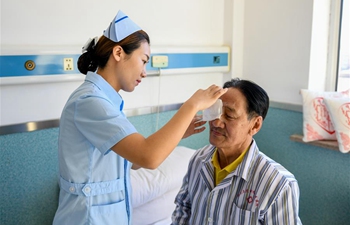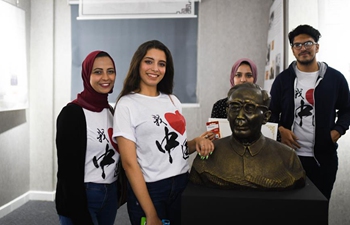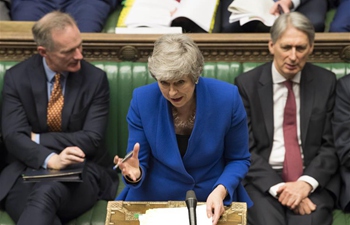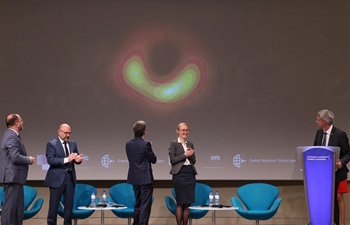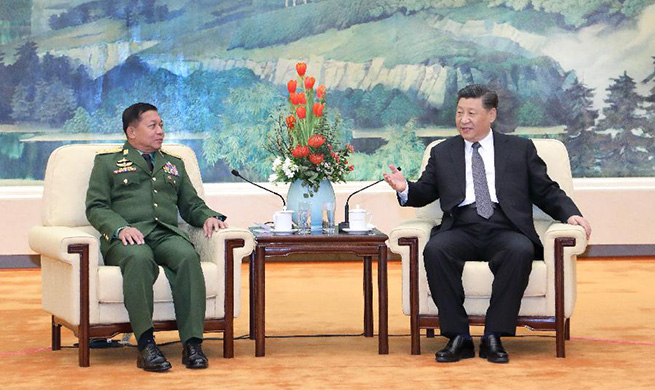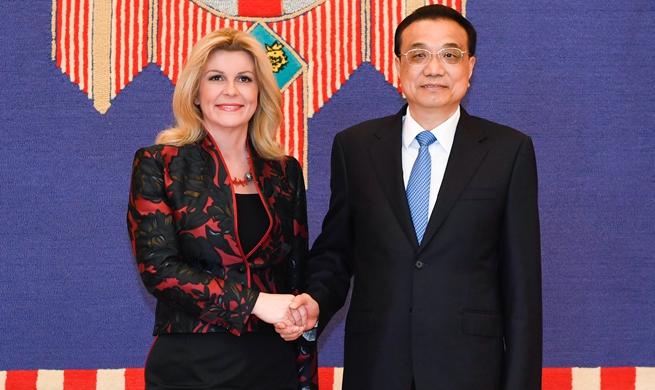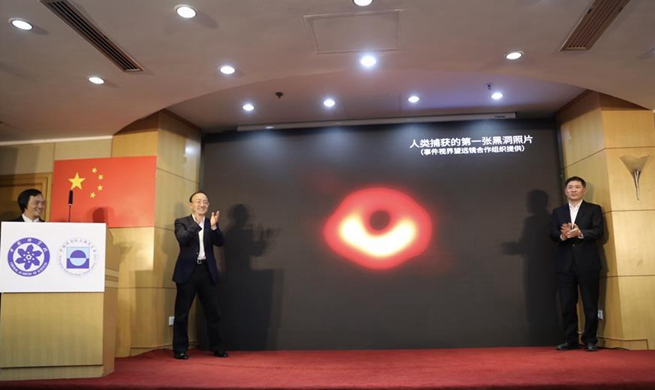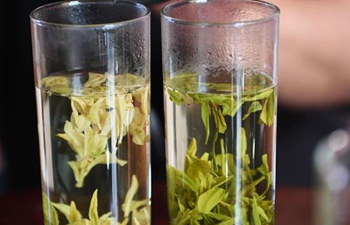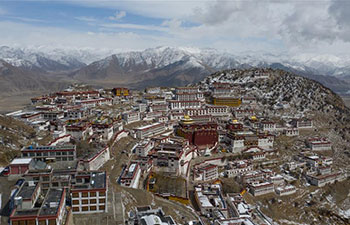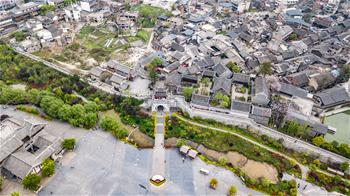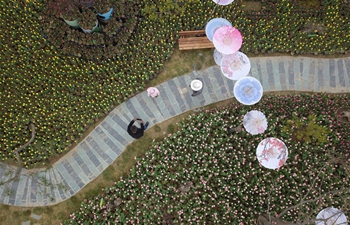by Pankaj Yadav, Zhao Xu
NEW DELHI, April 11 (Xinhua) -- The first phase of voting in India's general elections began on Thursday, kicking off a seven-phase polling which will last till May 19.
The past five years saw a stable government with the main ruling Bharatiya Janata Party's (BJP) 282 lawmakers winning in the last general elections held in 2014, 10 more than the 272 that was required to form the government.
The BJP ran an alliance government of the National Democratic Alliance (NDA) while keeping along its pre-poll alliance partners and touched almost the figure of over 330 out of the total strength of 545 members in the lower house of parliament, or Lok Sabha.
The BJP's performance had reduced the erstwhile ruling Indian National Congress (INC) to 44 seats in the parliament, its lowest tally ever.
But the elections this year were seen as a test of popularity for Prime Minister Narendra Modi, who during the past five years claimed to have done "much" for the poor and the downtrodden by building toilets, offering banking access and providing free LPG cylinders, among others.
The outcome of the polls would also reflect upon Modi's foreign and economic policies for the past five years.
Modi claimed to have built a "strong" image of India internationally by directly connecting to the Indian diaspora across the world.
In the economic front he introduced two major moves affecting the country's economy - the demonitization to curb black money and terrorism, as well as Goods and Services Tax (GST) which introduced a new "single and simplified" tax regime.
India's economy and the increasing consumer market are keenly watched over, as its GDP grew at an impressive 8.2 percent in the first quarter of the financial year 2018-19 (April-March). As per the UN World Economic Situation and Prospects (WESP) 2019 report, India's growth continues to be underpinned by robust private consumption, a more expansionary fiscal stance and benefits from earlier reforms.
Though Modi ran a comfortably placed, strong government, political analysts opined that this year's general elections might result in a "hung parliament," and no single political party, or an alliance of parties, would be in a position to form the next government on its own.
A second possibility could be that regional parties form a third alliance, namely a conglomerate of anti-BJP and anti-INC parties. In this scenario the regional parties must cobble together around 200 parliament seats among themselves.
The INC is expected to increase its tally of 44 in 2014 to above 100, and will be in a position to extend support to the "Third Front," analysts said.
Professor Amal Kumar Mukhopadhyay, a renowned political-scientist in eastern metropolis Kolkata, said in the current political scenario the regional political parties are destined to play a key anchor-sheet role in the government formation after the elections.
"Regional parties have been instrumental in government formation in the past too, and the present perplexing political situation will surely lead to a hung parliament with no single political party assuming a position to form the next government," he told Xinhua.
Abid Rasool Khan, spokesperson of the southern state Telangana-based political party the Telangana Rashtriya Samithi (TRS), echoed Mukhopadhyay's views.
"It is most likely that the regional (state-level) parties like TRS in Telangana, the YSR Congress in Andhra Pradesh, the All India Trinamool Congress in West Bengal, the Samajwadi Party (SP) and the Bahujan Samaj Party (BSP) in Uttar Pradesh, Biju Janata Dal (BJD) in Odisha, and other smaller parties will form a formidable third front which will be able to form the next government," he said.
The election results are to be announced on May 23.

